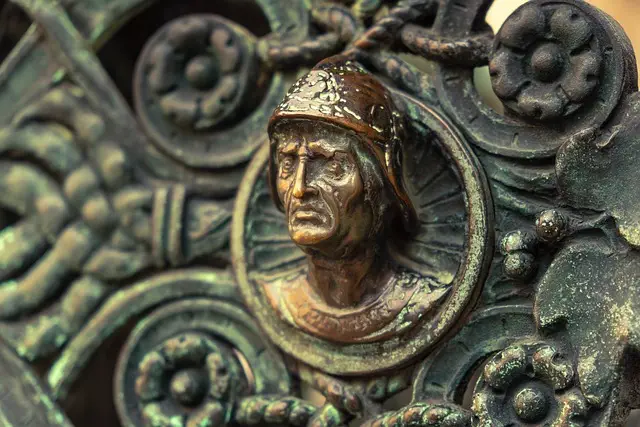White Maeng Da and White Bali are two popular strains of kratom, known for their roles in aiding athletic recovery by promoting energy, reducing pain, and enhancing mood. Both strains have distinct benefits: White Maeng Da offers a balanced alkaloid profile that combines energy with relaxation, potentially beneficial for managing pain and fatigue in athletes. Its active components, mitraphyne and 7-hydroxymitragynine, engage opioid receptors to provide analgesic effects. On the other hand, White Bali is known for its harmonious balance of sustained energy and pain relief, favored for supporting overall well-being during the recovery phase from intense physical activities. Athletes can choose between these strains based on their personal preferences and specific recovery needs, with each offering unique properties that can contribute to optimizing performance and recovery when used responsibly as part of a comprehensive health regimen. Proper dosage and timing are crucial for achieving the desired effects, making individualized coaching programs valuable for tailoring kratom use to each athlete's unique situation. White Maeng Da vs White Bali: both strains can be powerful tools in an athlete's recovery arsenal when used appropriately.
Engaging in high-intensity athletic activities often leads to muscle fatigue and soreness, which can impede recovery and performance. To enhance athletic recovery, kratom coaching emerges as a unique approach, particularly when considering the distinct properties of White Maeng Da and White Bali kratom strains. This article delves into the nuances of these strains, elucidating their roles in alleviating muscle soreness and boosting stamina and endurance recovery. By examining the science behind kratom’s alkaloids and exploring dosage strategies for optimal post-workout routines, athletes can personalize their kratom coaching experience to achieve peak performance and swift recovery times. Discover the advantages of White Maeng Da vs. White Bali in the realm of athletic recovery.
- Understanding Athletic Recovery and the Role of Kratom Coaching
- White Maeng Da vs. White Bali Kratom: An Overview of Their Properties for Athletic Recovery
- The Science Behind Kratom Alkaloids and Muscle Soreness Relief
- Strategizing Your Dosage: Tips for Incorporating White Maeng Da or White Bali into Your Post-Workout Routine
- Comparing the Effects of White Maeng Da and White Bali on Stamina and Endurance Recovery
- Personalizing Your Kratom Coaching Experience: Tailoring White Maeng Da and White Bali for Optimal Athletic Recovery
Understanding Athletic Recovery and the Role of Kratom Coaching

Athletic recovery is a critical aspect of performance for athletes at all levels, encompassing the physiological and psychological processes that return the body to a state of readiness after exertion. This complex process involves repairing muscle tissue, replenishing energy stores, normalizing hormonal balance, and managing inflammation, among other functions. Adequate recovery is essential for optimal athletic performance, as it allows for improved strength, endurance, and skill acquisition over time. In this context, kratom coaching has emerged as a distinctive approach to enhancing recovery. Kratom, a plant-based substance derived from the leaves of Mitragyna speciosa, has been recognized for its potential benefits in pain management, stress relief, and mood enhancement, which are all integral to effective athletic recovery.
Within the realm of kratom, specific strains like White Maeng Da and White Bali have garnered attention due to their distinct properties. White Maeng Da is celebrated for its balanced alkaloid profile, offering a stimulating yet soothing effect that may aid in pain relief and increased energy without the sedative qualities present in other strains. On the other hand, White Bali kratom is known for its fine vein powder that provides a gentle, uplifting mood boost, which can be beneficial for athletes seeking to maintain a positive mindset during recovery. Both strains have unique characteristics and can be explored under the guidance of a knowledgeable kratom coach who can tailor recommendations based on individual athlete needs and goals. Kratom coaching can thus play a pivotal role in optimizing athletic recovery, ensuring that athletes are prepared for their next training session or competition with a focus on holistic well-being.
White Maeng Da vs. White Bali Kratom: An Overview of Their Properties for Athletic Recovery

White Maeng Da and White Bali Kratom are two distinct strains within the kratom family that have garnered attention among athletes seeking to optimize their recovery processes. Both strains belong to the white-veined kratom category, which is known for its energizing and uplifting effects, as well as its potential to aid in physical recovery.
White Maeng Da, often referred to as “Pottato Leaf” due to its potent and long-lasting effects, is celebrated for its balanced alkaloid profile that offers a blend of stimulating and soothing properties. This balance can be particularly beneficial for athletes who engage in rigorous training, as it may help manage pain, enhance stamina, and promote mental clarity without causing sedation. The strain’s ability to alleviate muscle soreness and fatigue is attributed to its rich content of mitraphyne and 7-hydroxymitraphyne, which are thought to interact with the body’s opioid receptors, thus providing analgesic effects.
On the other hand, White Bali Kratom is recognized for its energizing qualities that can further enhance physical performance. It contains a higher concentration of mitragynine, another key alkaloid found in kratom. This strain is known to uplift the mood and provide a sense of well-being, which can be crucial for athletes who need to maintain mental resilience alongside their physical capabilities. The energizing properties of White Bali may assist in pushing through intense workouts or long training sessions, while also aiding in post-exercise recovery by potentially reducing muscle inflammation and accelerating the repair process. Both strains, when used responsibly as part of a comprehensive recovery regimen, can be valuable tools for athletes looking to maintain peak performance and wellness.
The Science Behind Kratom Alkaloids and Muscle Soreness Relief

Greek scientists have identified over forty alkaloids in kratom, with mitragynine and 7-hydroxymitragynine being the most prominent. These alkaloids interact with opioid receptors in the brain, leading to a range of effects including analgesic properties that can aid in athletic recovery. When it comes to relieving muscle soreness, two strains of kratom often compared are White Maeng Da and White Bali. Both contain the active alkaloids necessary for pain relief but may differ in their concentration levels and effects. White Maeng Da is known for its energizing and euphoric properties, which can enhance physical performance while supporting recovery. It’s believed that this strain can alleviate muscle soreness by modulating pain signals in the brain, allowing athletes to train harder and recover more effectively. On the other hand, White Bali kratom is celebrated for its balanced effects, offering both energy and pain relief without being overly stimulating. Its smooth and steady action makes it a popular choice among those seeking a milder, yet still potent, means to manage post-exercise discomfort and promote overall well-being during the recovery phase. Both strains have their unique benefits, and understanding the nuances of each can help athletes tailor their kratom use to optimize recovery and performance.
Strategizing Your Dosage: Tips for Incorporating White Maeng Da or White Bali into Your Post-Workout Routine

Athletes seeking to enhance their recovery process post-workout can consider integrating White Maeng Da or White Bali kratom into their routine, as both strains are known for their stimulating and uplifting effects. Strategizing your dosage is key to achieving the desired balance between energy levels and relaxation, which is crucial for effective recovery. White Maeng Da, with its reputation for providing sustained energy without overstimulation, can be particularly beneficial for athletes looking to bounce back from intense training sessions or competitions. Its alkaloid profile promotes a sense of well-being and mental clarity that can help in maintaining focus during the recuperative phase.
On the other hand, White Bali kratom is also a favored choice among athletes due to its mood-elevating properties and smooth energy flow. It’s often noted for its comprehensive effect on both physical and mental states, which can be advantageous in post-workout recovery scenarios. When comparing White Maeng Da vs White Bali, one should consider their individual response to each strain, as the effects may vary from person to person. For instance, some athletes might prefer White Maeng Da for its cleaner energy boost, while others might lean towards White Bali for its full-spectrum benefits and gentle stimulation. It’s essential to start with a lower dosage to gauge how your body responds before gradually adjusting the amount as needed. Always consult with a healthcare professional or a kratom coach when incorporating any new supplement into your recovery routine to ensure safety and effectiveness.
Comparing the Effects of White Maeng Da and White Bali on Stamina and Endurance Recovery

Athletes seeking to optimize their recovery and enhance both stamina and endurance may find themselves exploring natural supplements such as kratom. Within the realm of kratom, two notable strains are White Maeng Da and White Bali, each with distinct properties that can influence athletic recovery. White Maeng Da is renowned for its balanced alkaloid profile, which includes mitragynine and 7-hydroxymitragynine, offering a stimulating effect that is thought to improve physical performance by reducing fatigue and increasing energy levels during recovery periods. This strain can help athletes maintain consistent stamina throughout their training regimens due to its ability to modulate pain perception and promote a more positive mental outlook.
On the other hand, White Bali kratom is celebrated for its potent energizing effects, which are also attributed to alkaloids present in the strain. Athletes who use White Bali often report an enhanced feeling of endurance, which can be beneficial during prolonged activities or intense training sessions. The strain’s effect on mood and energy levels may contribute to a more efficient recovery process by potentially improving the body’s capacity to repair and rebuild after exertion. Both White Maeng Da and White Bali have their unique advantages for athletic performance, but it is essential for athletes to understand how these effects can complement their recovery strategies when used responsibly and as part of a holistic health approach. When comparing White Maeng Da vs White Bali for stamina and endurance recovery, individuals should consider personal tolerance, the specific demands of their sport or training, and the timing of kratom intake in relation to physical activities.
Personalizing Your Kratom Coaching Experience: Tailoring White Maeng Da and White Bali for Optimal Athletic Recovery

Engaging in high-intensity athletic activities can take a toll on the body, necessitating effective recovery strategies to maintain peak performance and overall well-being. Kratom, derived from the leaves of Mitragyna speciosa, has garnered attention within athletic communities for its potential role in promoting recovery. White Maeng Da and White Bali are two strains often highlighted in discussions about kratom’s benefits for athletes. Each strain offers distinct alkaloid profiles that can influence the user’s experience, making personalization a key aspect of incorporating kratom into an athletic recovery regimen.
White Maeng Da kratom is renowned for its balanced alkaloid content, which may contribute to a stimulating yet soothing effect. This combination can be particularly beneficial for athletes seeking to manage post-exercise soreness while maintaining energy levels for subsequent activities. White Bali, on the other hand, is celebrated for its uplifting and energizing properties, which might aid in mood elevation and cognitive clarity after intense physical exertion. The choice between these strains can be influenced by an athlete’s specific recovery needs, as well as personal tolerance and preference. A kratom coaching program that focuses on individualized experiences can guide athletes through the nuances of White Maeng Da and White Bali, helping them to optimize their recovery process and enhance athletic performance safely and effectively. Tailoring the dosage, timing of consumption, and strain selection based on personal feedback and recovery goals is crucial for achieving the best outcomes with kratom.
Incorporating kratom coaching into athletic recovery routines can be a beneficial strategy for many athletes, particularly when considering the distinct properties of White Maeng Da and White Bali. This article has shed light on the multifaceted role of kratom alkaloids in mitigating muscle soreness and enhancing stamina and endurance recovery. By understanding the science behind these compounds and learning how to strategize dosages effectively, athletes can harness the unique benefits of both strains. Personalization is key to optimizing athletic recovery with kratom, and tailoring White Maeng Da or White Bali to individual needs can lead to improved performance and faster healing processes. As such, white maeng da vs white bali discussions are crucial for athletes seeking to refine their post-workout routines for better outcomes. It’s clear that with the right guidance and understanding of these botanicals, kratom coaching can play a pivotal role in an athlete’s recovery and overall well-being.






